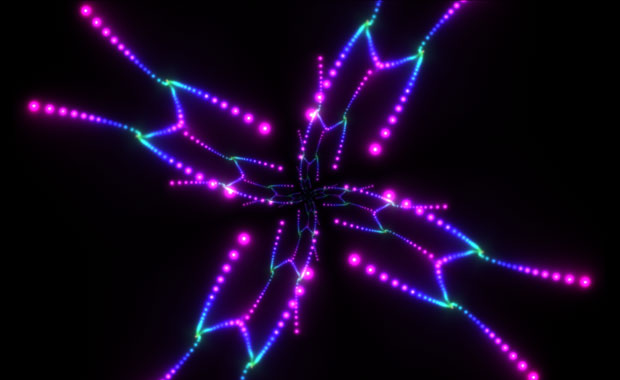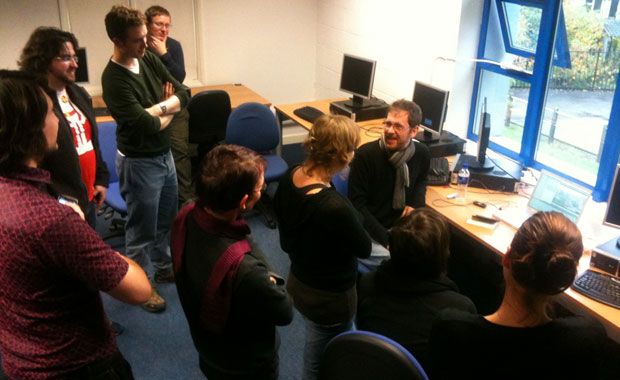Day 02
Hull digital Media Labs Day 02
This morning started with Ben Dalton and Dave Lynch showing the group some more programs that can be used to create interactive content.
Ben went through Processing in a little more detail than most of the artists had touched on on day one, and also introduced Quatrz Composer – a Mac based object oriented environment that can quite quickly make nice ‘eye jazz’.
Dave then showed us some patch examples in vvvv (another object oriented environment) and spoke about how he had used it in previous work.
I have used both pd and MaxMSP for some experimentation and projects in the past and thought that the object oriented way of building patches would be a good way of working. More recently, possibly because I have been spending more time in the Arduino IDE I have found more traditional line based coding to make more sense. I think it’s useful to try both and have an understanding of how each way of building works, but I think I am going to stick to line by line programming for now.
 After a morning of further exploration and testing out of different softwares the group came together to discuss what we had found.
After a morning of further exploration and testing out of different softwares the group came together to discuss what we had found.
Some showed examples of early working examples that they had managed to get working, which was really cool to see. Impressive considering how little time we have had to experiment, choose and focus on a particular software and concept.
Discussion then turned to the suitability of touch screens as a platform for artwork and how it was quite alien to a lot of us on the residency. Lots of interesting points were made:
- Does having this particular platform restrict artistic creativity?
- How does this restriction affect how we feel towards a work we may create for touch screen?
- Touch screens a very definite (harsh?) barrier between the real and digital worlds.
Some of the cool ideas that came out of today’s research, experimentation and discussion were:
- Tilting a touch screen so that it is horizontal and rolling things around on it as an input.
- Possibility of using the touch screen to cause things to happen in the real world. Does the touch interface make us behave differently to using a mouse or physical switches?
- Collaboration and how a project can come about with the input of many people – it is not strictly necessary for one person to be able to do everything. Concept, tech, programming, making etc.
I have found the residency to be fascinating so far in that it has put a lot of the artists out of their comfort zones – particularly concerning the development of works for touch screens. Such a specific – and in some ways limiting – piece of hardware has caused internal conflicts in what some think they should be doing and what they want to be doing.
Thus I have seen the importance of ongoing discussion within the group – being able to talk about the problems / bad things alongside the good and positive findings is a very human thing to need to do.
Getting your thoughts out and shared with the group helps – especially when you realise that other people have similar struggles and views. The residency group is made up of artists from such a wide range of disciplines and practices that each one of us has interpreted the challenge differently and so far tackled it in our own way.
After another hour or so of working on our own ideas or talking to others there were four more presentations by people on the residency.
Glen, Ellie, Bob and I all spoke about some of our recent work.
Tomorrow we will have almost the whole day to focus on our work and hopefully hone the ideas and findings we have had over the past two days.



